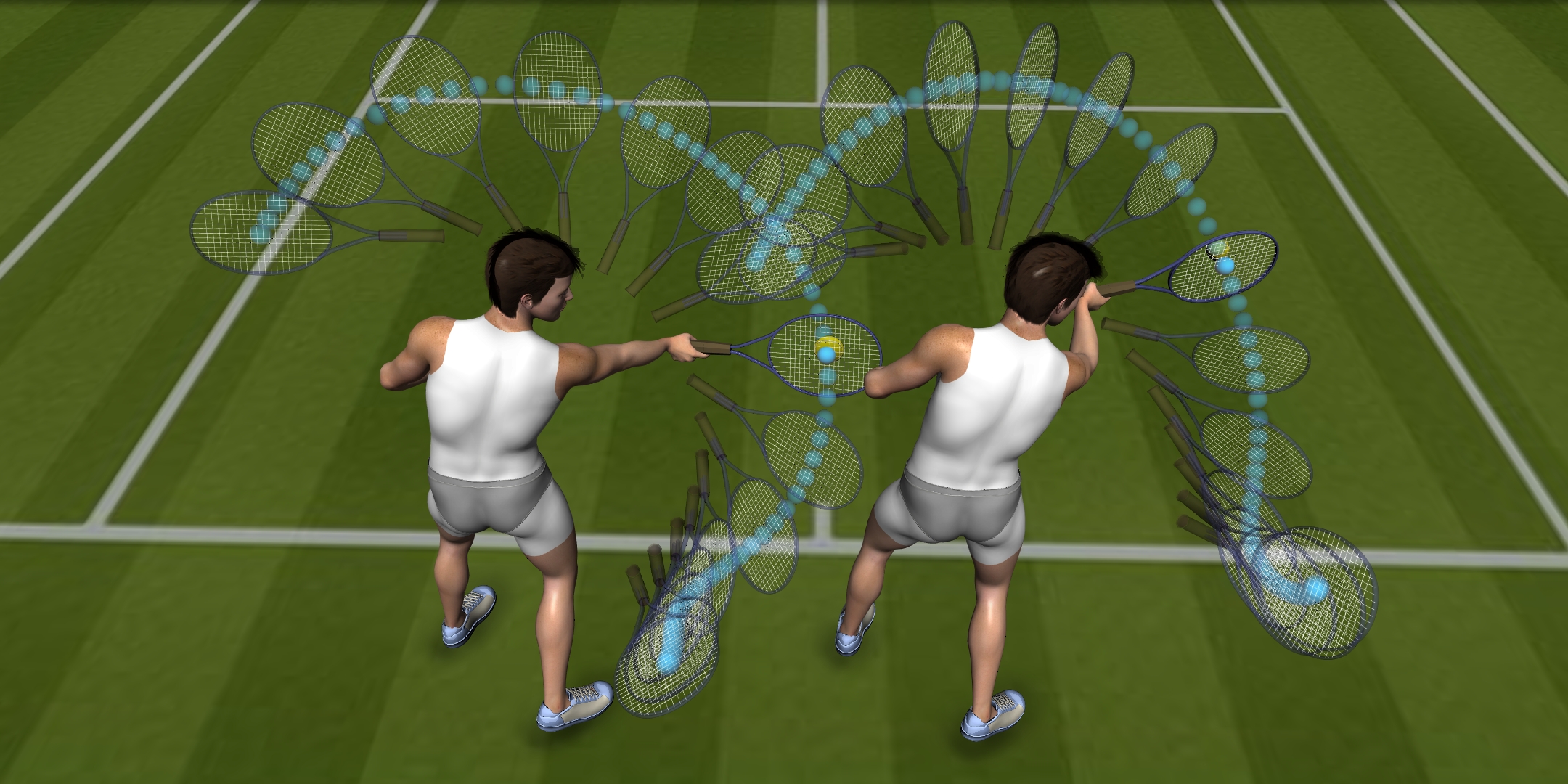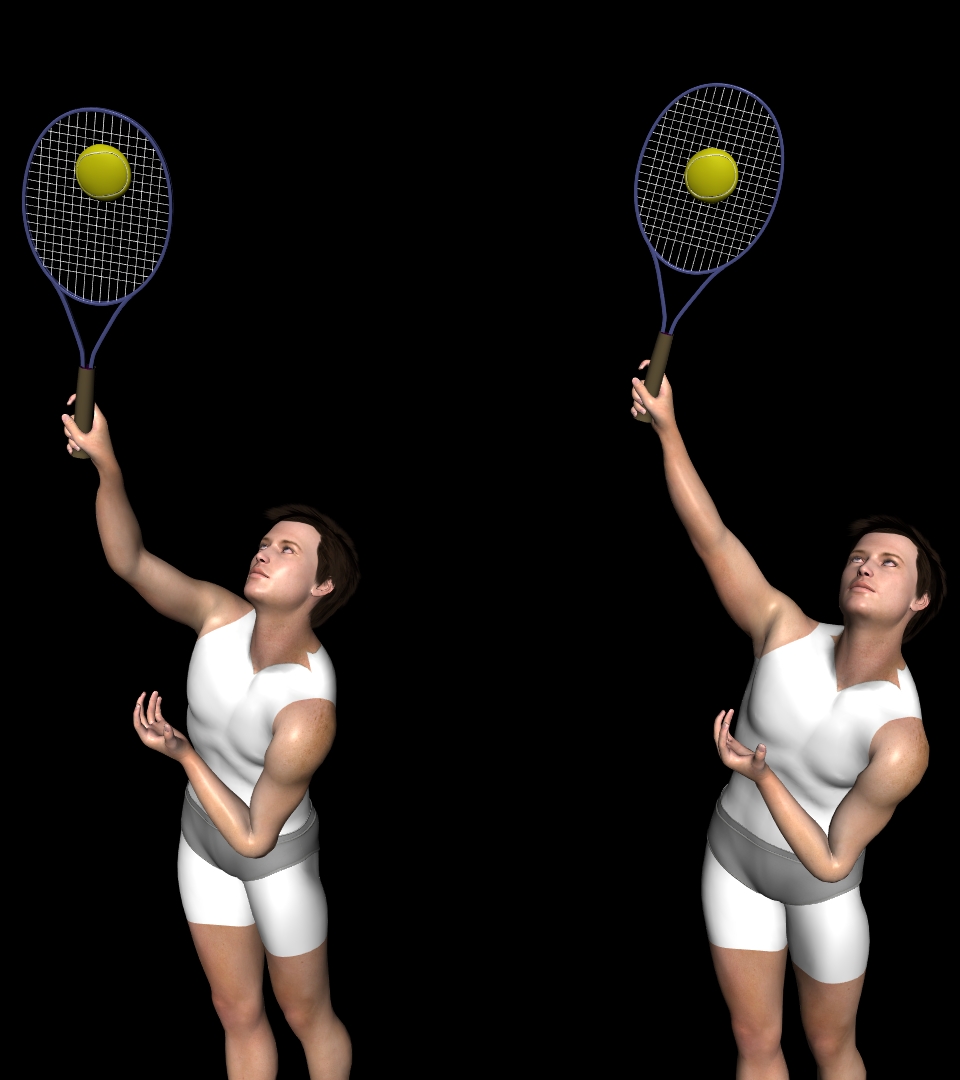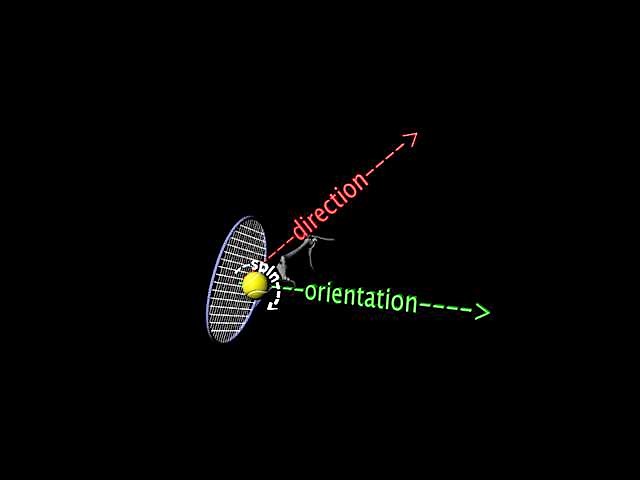Crooked Elbow Syndrome
You must always address a tennis ball in full elbow extension. This applies to every stroke, including the serve and service toss. It applies to the lob, drop shot, approach shot, topspin, slice and flat ground strokes, and one and two handed backhands. You must always reach for the ball; if you are too close to the ball to reach for it, you must dance away from the ball's flight path so you can reach for it. The penalties for violating this absolute rule are profound loss of power, depth, spin, control and frequent mishits. A cropoked elbow is why lobs go short, approach shots hit the net strap, and your service toss sometimes resembles tossing the bouquet. Hitting with a flexed elbow is a sneaky little syndrome that can completely trash your game. It has many causes, but they all boil down to a common misperception: that hitting a ball with a bent elbow is optimal for power, ball control, racket head control, and elbow joint protection from injury. Actually, the reverse is true. Striking a ball with the elbow bent leads to 'pushing' the ball, which results in the normal vibration of the racket being dissapated in the elbow predisposing to ligamentous injury and arthritis. Bending the elbow shortens the hitting arm; reducing leverage and thereby reducing power. Elbow to flexion also changes the length of the hitting arm dynamically during the stroke making it difficult to accurately address the ball thus potentiating misshits and shanks. Finally, and perhaps most important, during the lock and load phases of the backswing, during which time essential control and spin forces are supposed to be stored in the forearm muscles, a bent elbow displaces rotation to the upper arm and shoulder muscles which are too large to be properly stretch-shortened and too far from the wrist to deliver those forces to the ball at the proper moment. Only properly stretch-shortened forarm muscles can create the 'SNAP' required for ball control and spin production.



